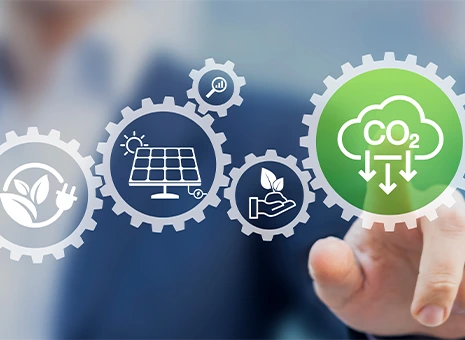How Does Patent & Technology...
European premium car manufacturers, historically revered for their innovation and luxury, now face unprecedented challenges due to the innovative, price-effective electric vehicles (EVs) launched by...
Read More
A Deep-Dive into our work on the industry
The chemical industry is undergoing a significant transformation as ambitious research and development teams focus on better ways to produce, store, and use chemical resources. The production of chemicals involves converting raw materials such as fossil fuels, water, minerals, metals, and so on into tens of thousands of different products that are central to modern life as we know it. While focusing on sustainability, bio-based products are gaining interest in most segments, leading to a reduction in carbon footprint. The ongoing adoption of technological developments is a feature of the chemicals industry that can be seen in every segment and creates both opportunities and risks. The growing need for process efficiency drives the adoption of technologies such as Internet of Things (IoT) sensors for production processes and end-product performance. Other than this, high-performance materials are increasingly being used in various industries due to their strength and durability. Environmental and social governance (ESG) issues are a tipping point for the chemicals industry and are impacting businesses across sectors. So, more and more businesses are focusing on new technology trends like plastic and polymer technology, 3D printing research, etc.
Ingenious e-Brain (IeB) assesses the strategic paths and actions focused on the short to long-term horizon, usually ranging from 1 to 20 years down the line. We support our clients in defining their strategic paths for the future through technology, market intelligence, competitive intelligence services, and implementation practices in a pragmatic manner, facilitating decision-making, and translating the strategy into feasible initiatives.
Raw Material Providers
OEMs
Ingredient Manufacturer
Supplier/ Distributor
Product Manufacturer
End User
Raw materials sourcing from AgriFarming
Provides equipment / machinery for processing raw materials
Process / extract ingredients from raw materials
Supplies / distributes ingredients to product manufacturer
Manufactures food and beverage products utilizing ingredients
End users of the products

Business Objective
The client wanted to understand in detail how the new trend of adsorption/absorption in the chemical industry will benefit lower emission of CO2 from a mixture of gases and dehumidifying air/other gaseous mixtures.
The main objective of the engagement was to understand the technology developments for materials and equipment, market attractiveness, business models, and player ecosystem.
Research Methdology
Key Business Questions
Benefits to Client
Here is what we do to make sure that the specific demands of your customers are being fulfilled:
To help our clients understand their customers and their opinions, we start by assessing the competitive landscape, positioning, competitions in different regions, etc., followed by analyzing country-wise regulations, government policies, and restrictions and their impact on the business. After that, detailed profiling of companies is done based on SWOT analysis, product portfolio, services, and strategies. When we are able to identify target geographies, adoption trends, and factors affecting business in different geographies, it becomes easier to understand market figures in terms of volume and value, evaluate product segments, etc.
Here are few important things involved in the process:
We help businesses reduce waste and carbon footprints through sustainable and eco-friendly ingredients and product offerings. Our team focuses on several factors such as life cycle assessment, water consumption, energy consumption, etc. and also performs assessments of the techno-commercial aspects of emerging technologies. We implement digitization by identifying competitors best practices, use cases, and business cases. Other than this, we also asses the usage of more recycled materials in new products as well as materials that are easier to recycle.
The product development acceleration involves the following things:
We start by benchmarking different technologies and then recommend the ones with great potential. For this, we perform technology scouting to understand what adjacent industries or sectors are using and then assess the feasibility of their implementation. For state-of-the-art technologies, our team develops an understanding of the technology landscape while assessing whitespaces and gaps in the current products and technologies. Other than this, it also involves implementation of various digital technologies in smart devices and advanced products.